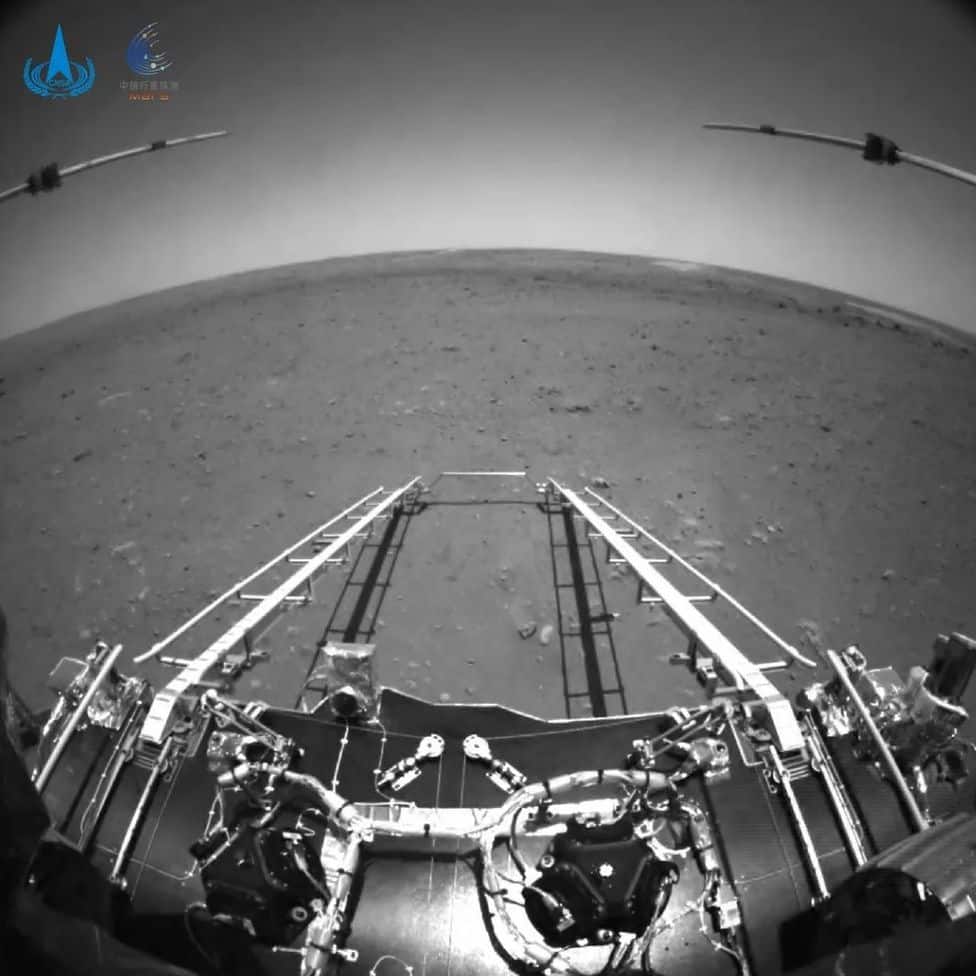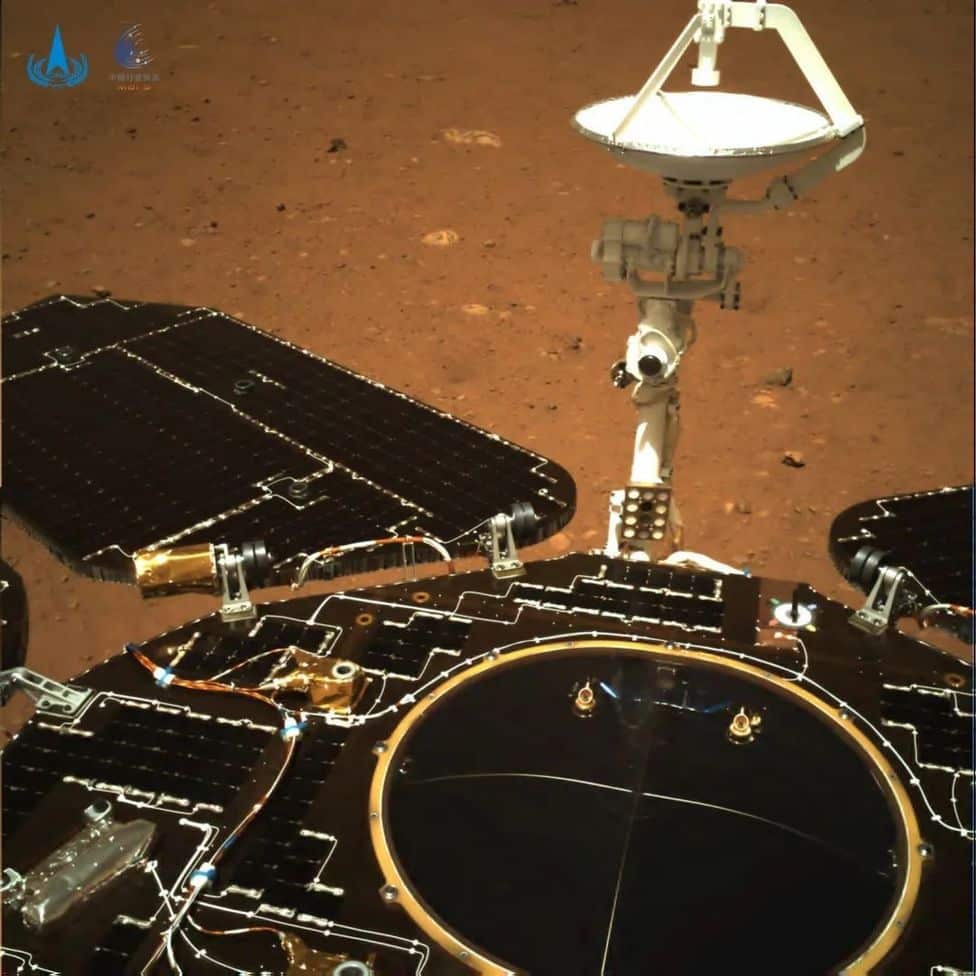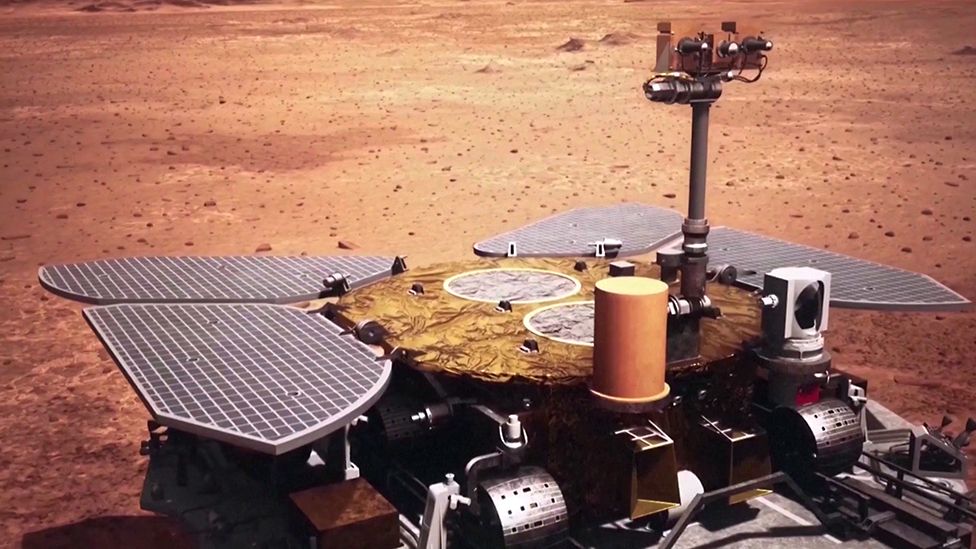As the rover lands on the Red Planet, China releases the very first pictures of the view captured by Zhurong on its website.

The forward view shows the landscape ahead of the robot as it sits on its landing platform; the rear-looking image reveals Zhurong’s solar panels.

With this China has become the second nation, after America, to successfully put a probe on the surface of Mars and operate it for a significant length of time.
Consequently, the scientists are hoping to get at least 90 Martian days of service out of the six-wheeled robot. Its location on Mars is Utopia Planitia, vast terrain in the planet’s northern hemisphere.
Post-landing deployments of China’s Zhurong rover
There are some short videos too that record the moment the rover’s aeroshell, departs the Tianwen-1 orbiter. Tianwen-1 is the satellite that carried the rover from Earth.
Furthermore, the surface imagery reveals that critical hardware deployments after landing were completed cleanly.
Firstly, these deployments included the unfurling of the solar arrays to provide power to the robot. Secondly, the release of the antenna to communicate with Tianwen-1, and onwards with controllers back in China. And most importantly, the extension of the ramp down which Zhurong will soon roll to begin its mobile mission.
Resemblance and other components of the Chinese rover
It’s clear that Zhurong looks a lot like the US space agency’s (Nasa) Spirit and Opportunity vehicles from the 2000s.

It weighs some 240kg. A tall mast carries cameras to take pictures and aid navigation. Five additional instruments are there in place to investigate the mineralogy of local rocks. They will look into the general nature of the environment, including the weather. Like the current American rovers (Curiosity and Perseverance), Zhurong has a laser tool to zap rocks to assess their chemistry. It also has a radar to look for sub-surface water-ice – a capability it shares with Perseverance.
Other facts
Utopia Planitia is where Nasa landed its Viking-2 mission in 1976. It is a colossal basin that runs more than 3,000km across. It was formed by an impact early in Mars’ history.
Some evidence points to it having held an ocean long ago. Remote sensing by satellites indicates there are significant stores of ice at depth.
In February, America had landed a much larger and heavier (1 tonne) Perseverance robot. Europe, which has twice failed with landing attempts, will send a rover called Rosalind Franklin to Mars next year (in a joint project with the Russians).



